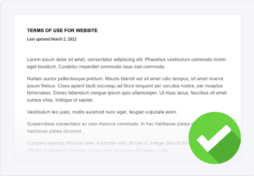The world of legal policies can be tricky, especially for new business owners.
For example, do you need an end-user license agreement (EULA) or a terms and conditions agreement? Or do you need both?
This article will review the similarities and differences between terms and conditions and EULAs and guide you on which one you need and when.
Let’s get started.
- What’s the Purpose of an End-user License Agreement (EULA)?
- What’s the Purpose of Terms and Conditions?
- Differences Between a EULA vs. Terms and Conditions
- Clauses Appearing in Both Types of Contracts
- Clauses That Only Appear in EULAs
- Clauses That Only Appear in Terms and Conditions Agreements
- When To Use a EULA
- When To Use Terms and Conditions
- Where Do EULAs Get Displayed?
- Where Do Terms and Conditions Get Displayed?
- Are There Other Terms You Should Know?
- Summary
What’s the Purpose of an End-user License Agreement (EULA)?
Also referred to as a software license, a EULA is a formal contract between a software developer (the licensor) and a customer (the end-user).
A EULA grants an end-user a license to use your application after they have paid for it. It also protects your ownership and copyright of the software by requiring the user to:
- Follow certain developer-mandated requirements
- Accept legal liability for any damage they suffer as a result of using your software
Most EULAs prohibit end-users from sharing or distributing the software in any way that benefits them rather than the developer.
What’s the Purpose of Terms and Conditions?
Terms and conditions agreements are legally binding agreements between you and your site users.
By agreeing to the terms and conditions, users agree to follow your rules in exchange for access to your services and website.
The purpose of a Terms and Conditions agreement is to reduce the likelihood of legal disputes between the end-user and the business owner or developer.
Most, if not all, websites and apps have terms and conditions. They’re also known as:
- Terms
- Terms of Use
- Terms of Service
- Acceptable Use Policy
- User Agreement
It’s important to note that there are no differences between, for example, terms and conditions vs. terms of service or any of the names above — they are all the same document.
Differences Between a EULA vs. Terms and Conditions
Although they appear similar at first, EULA and terms and conditions agreements are pretty distinct.
Scope
EULAs have a much narrower scope than terms and conditions agreements.
They typically only cover issues related to the licensing of the software, such as how users can use or interact with the software. As such, EULAs only reduce the likelihood of software disputes between end-users and developers.
In contrast, Terms and Conditions are broad guidelines for using a website, app, program, or software. As such, they cover a wide range of topics, including the use of the software or website, third-party service providers, and costs.
Disputes
Terms and conditions reduce the likelihood of content, website, and service disputes between end-users and developers.
What they “do”
Terms and conditions don’t “license” software to end-users— instead, they provide a “subscription” or “access” to the services.
Clauses Appearing in Both Types of Contracts
EULAs and Terms and Conditions agreements both contain many clauses, including Parties, Limitations on Use, and Warranties and Disclaimers.
Here are some important clauses that tend to appear in both our EULA template and terms and conditions template.
Parties
List out the full legal name of your organization so that end-users know with whom they’re entering into a contract.
You should also establish what type of agreement your contract is (i.e., whether it’s a EULA or a terms and conditions agreement) and that it creates a legal relationship between you and the end-user.
Definitions
Define all of the terms you will use in your agreement, including ones that you think are obvious, such as “software” and “product.”
Here’s a great example from Adobe Fontspring:
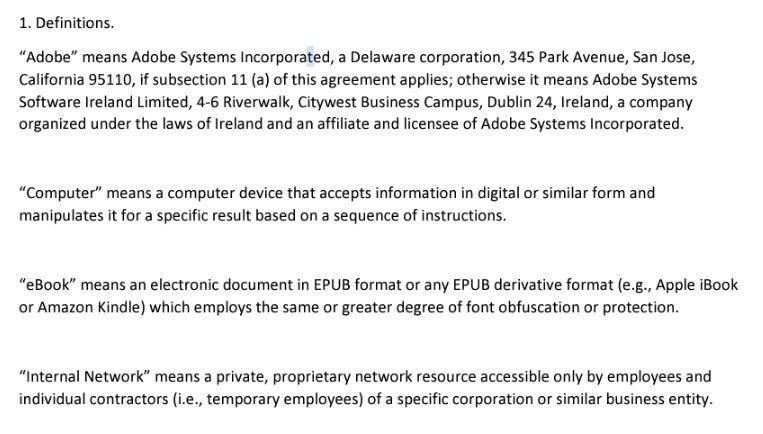
Other Agreements
If your company has other agreements, such as a return and refund policy, shipping policy, privacy policy, or terms of use agreement, reference and link them in your terms and conditions or EULA. These links remind users that:
- They’re bound by more than just the agreement at hand
- They need to review other agreements
Here’s an example from PayPal’s Terms and Conditions:

Governing Jurisdiction
If a dispute occurs between one of your users and your company, your case could end up in court. However, since the user may not be living where your company is based, it might not be apparent where the case should be heard.
That’s why you need to choose the governing jurisdiction of such cases.
Most companies will choose the law of the state or country where they operate their primary business, but companies with a large international following may also include other jurisdictions. This allows users in other jurisdictions to raise proceedings in their own countries.
This clause can also be called a dispute resolution clause. Here’s what the dispute resolution clause in Patreon’s Terms of Use looks like:
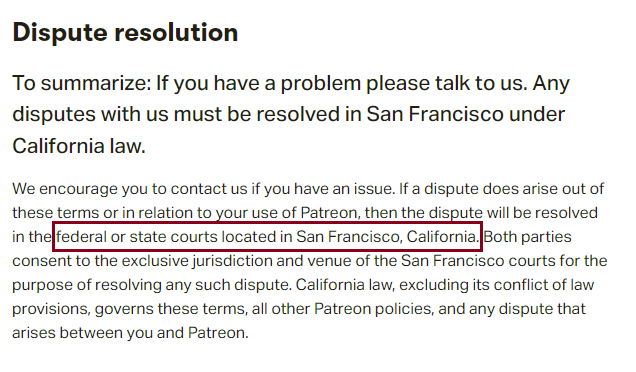
Limitation of Liability
This clause limits your liability if an end-user’s reputation or property gets damaged due to using your software. In essence, it ensures that you won’t be held responsible for consequential and incidental damages.
However, if you are held responsible, you’ll only have to pay up to a certain amount.
Here are some typical damages that companies include in their terms and conditions or EULAs:
- Property damage
- Loss of business reputation and goodwill
- Personal injury (up to a reasonable extent)
- Hardware malfunction
- Punitive damages arising from any legal cause of action related to this EULA
Most Limitation of Liability clauses use similar wording.
Here’s an example from Rec Room’s EULA:
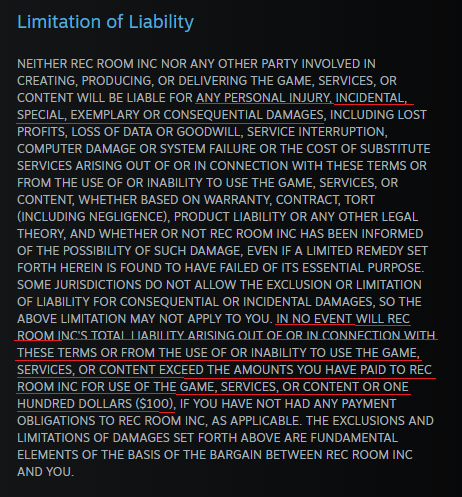
Notice how Rec Room specifically limited its total liability to either:
- The total amount the user has paid to Rec Room Inc. for the use of the game, content, or services
- $100
Here’s what Patreon’s Limit of Liability clause looks like. As you can see, both examples use similar language to limit liability.
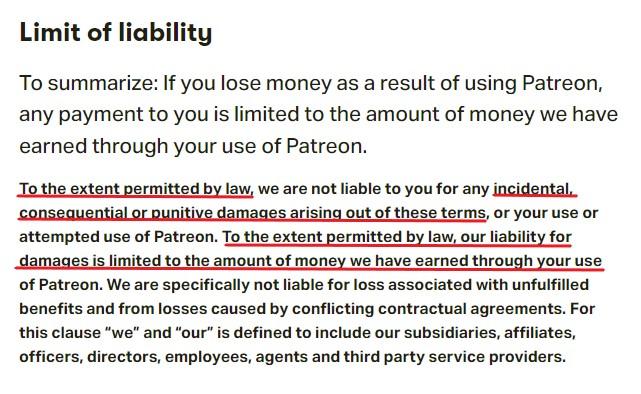
User Guidelines
This clause establishes what users can and can’t do, what constitutes unauthorized and inappropriate behavior, and how they should interact with others.
For terms and conditions, user guidelines typically encourage users to treat each other with respect. For example, most companies will ban users for:
- Posting abusive, offensive, pornographic, obscene, or threatening content
- Advocating or inciting violence
- Bullying or harassing other users
- Promoting illegal acts, including violation of intellectual property rights, publicity rights, and privacy rights
- Exposing another user’s personal information
- Sending spam, chain letters, or junk mail
- Sending malicious content such as viruses, Trojan horses, and malware
- Scraping or crawling to access, view, or collect information
- Artificially increasing likes, follows, and other forms of manipulation
- Altering or removing any trademark, copyright, or other intellectual property notices
If these guidelines are extensive, put them on another page and add a link to them. That’s what Spotify did in its terms and conditions agreement:

You should also include subsections for different types of user accounts if your service offers more than one kind of user account. For instance, Spotify has a section specifically for brand accounts:

Notice how this clause in terms and service agreements revolves around the user community. This focus is because terms and conditions agreements revolve around a service, such as a website or an app with an online user base.
In EULAs, this clause is pretty much the same. The only difference is the scope: instead of applying to a community, it only applies to app-specific behavior. Here’s an example from Ubisoft’s EULA:
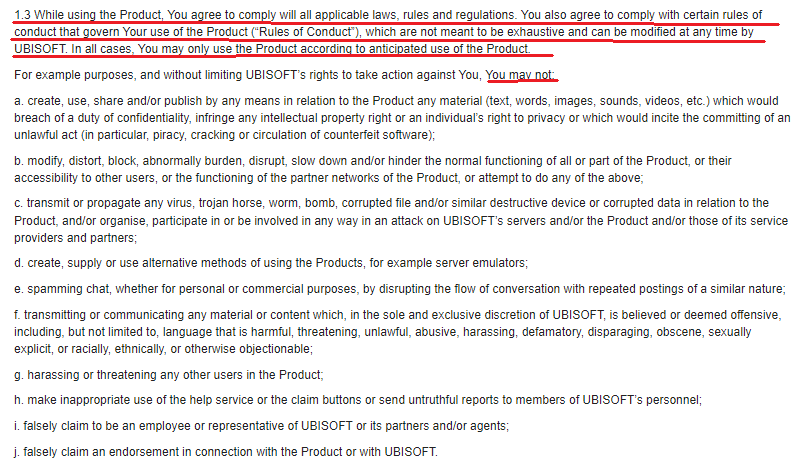
Warranties and Disclaimers
You should include warranties and disclaimers to protect yourself from liability because you can’t promise that your product will always run smoothly. This clause reminds end-users to take your product “as is” and limits their expectations.
Tell them in plain language that you make no promises or assertions about your product other than how it meets basic legal requirements.
Here’s what the Warranties and Disclaimers clause looks like in Rec Room’s EULA:
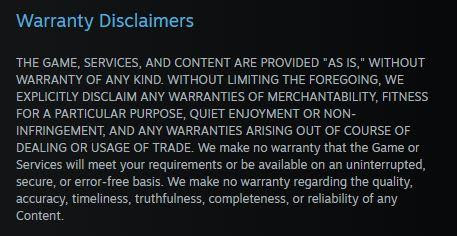
Clauses That Only Appear in EULAs
Here are some EULA-specific clauses you should keep in mind when drafting a EULA:
Grant of License
Say that you are only granting a license to the end-user to use the software and that you retain full control and ownership rights over the software.
For example, here’s what Rec Room’s Grant of License clause looks like:
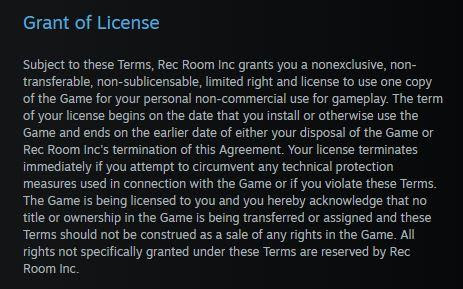
Notice how this clause contains the following details:
- When the term of the license begins
- When the license terminates
- How the game is only being licensed to the user
- How the user can only use one copy of the game for their personal, non-commercial use
- How these terms should not be construed as a sale of any rights in the game
- How Rec Room Inc reserves any rights not explicitly granted by this EULA
Although most EULAs only allow users to use one copy of the software for their personal use, some EULAs grant users more rights.
Limitations on Use
Besides granting the end-user a license to use the software, most EULAs also feature a Limitations on Use clause.
Most EULAs only permit users to use the program for personal reasons.
However, if you’re offering illustration or design software, you may want to allow end-users to use your product for commercial purposes.
Most EULAs will prohibit users from doing the following without your prior written consent:
- Reverse engineering
- Using the program for illegal activities such as hacking and spying
- Copying the application to develop, sell, design, or manufacture third-party software or devices
- Leasing the software to third parties
- Decompiling a part or all of the program
- Translating the software and rebranding it as a new product
Here’s what Adobe Fontspring’s Limitations on Use clause looks like:
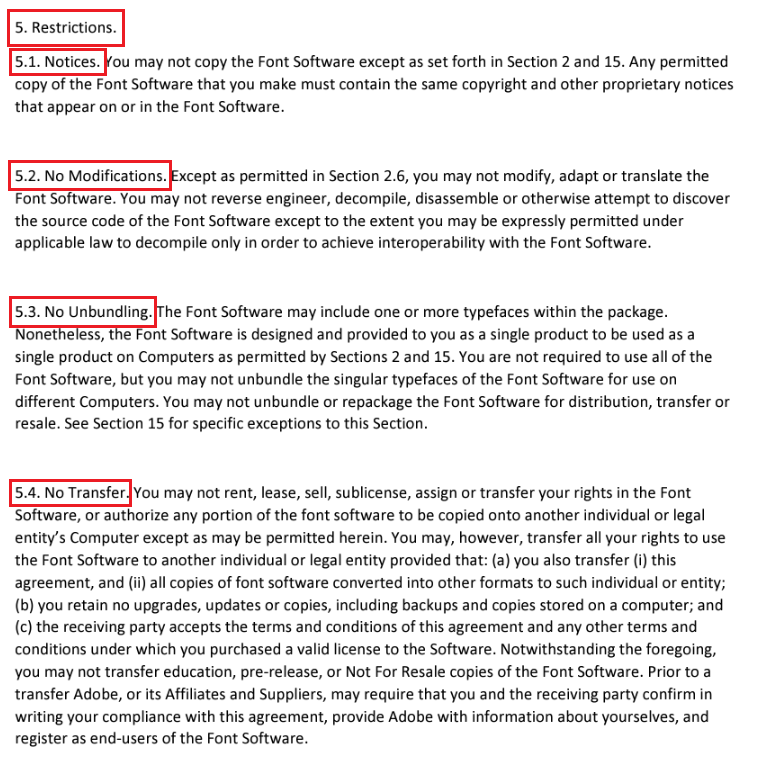
Termination Conditions
Tells the end-user that you can terminate the agreement at any time if they breach the agreement. You should also make it clear that the user can withdraw from the agreement at any time.
Here’s an example from Goodwall:

Clauses That Only Appear in Terms and Conditions Agreements
Now, let’s look at some clauses typically found in a well-written terms and conditions agreement.
Acceptance of Terms
If a user has to place an order or create an account to use your services, you can easily obtain acceptance of your terms and conditions agreement.
However, if you offer a web app or website, it might be harder to obtain clear proof of the user’s acceptance.
In such cases, your terms and conditions agreement should have a clause stating that the user has accepted the agreement by taking certain actions.
For instance, you could tell users that by creating an account on your site, they automatically agree to your site’s terms and conditions. However, that’s not enough to enforce your terms and conditions in court.
Courts want clear proof that users have read and agreed to your terms and conditions. Due to this requirement, you should consider using clickwrap.
Clickwrap stops users from entering and using your service until they’ve acknowledged and accepted your Terms and Conditions. They need to manually click a checkbox or button to indicate their consent to your Terms and Conditions before they can move on.
Payment Details
If your service charges subscription or membership fees, include the terms of payment in your terms and conditions. Be as detailed as possible and use subheadings as needed.
Here’s an example from Spotify’s Terms and Conditions:
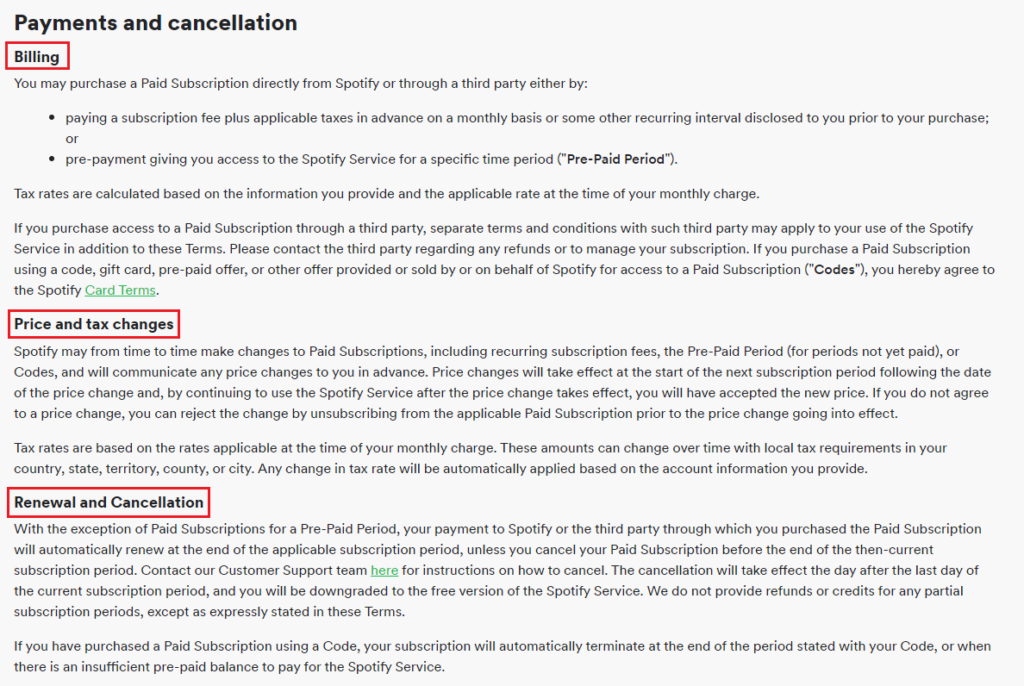
As you can see, Spotify addresses the following:
- How users can purchase a paid subscription
- How tax rates are calculated
- Price and tax changes
These details reduce Spotify’s legal risk if a dispute arises with an end-user.
Account Termination and Suspension
Your terms and conditions should also give you the right to terminate or suspend your users’ accounts.
Here’s an example from Tapas’ Terms of Service:
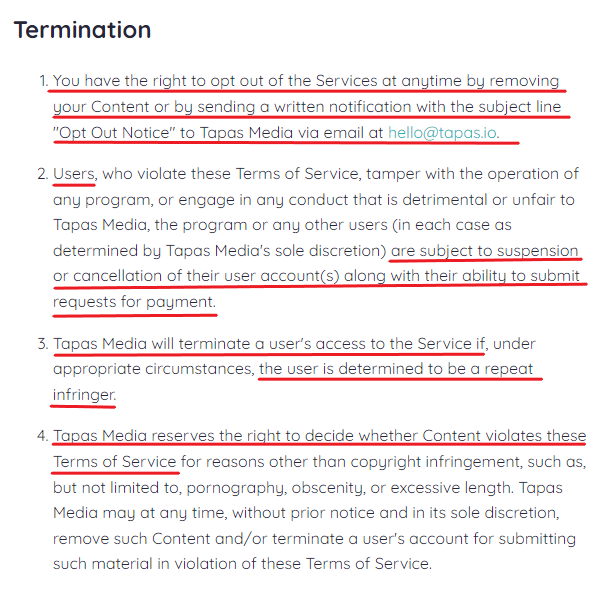
Note how Tapas:
- Informs users of their right to opt out of the service by removing their content or sending a written email to Tapas Media
- Establishes reasons for suspending or terminating user accounts
- Explains that they have the right to decide whether a particular user’s content violates the site’s terms of service for reasons other than copyright infringement
Copyright Infringement
You should also inform end-users that you own the service and that any unauthorized use constitutes copyright infringement. Copyrighted content may include:
- Website design
- How the content is arranged on your site or service
- Content, such as photos, videos, sounds, and text
- Logos
If your service or site allows others to upload content, you should also consider adding a clause for informing users how to file copyright claims.
Here’s an excellent example from Apple:
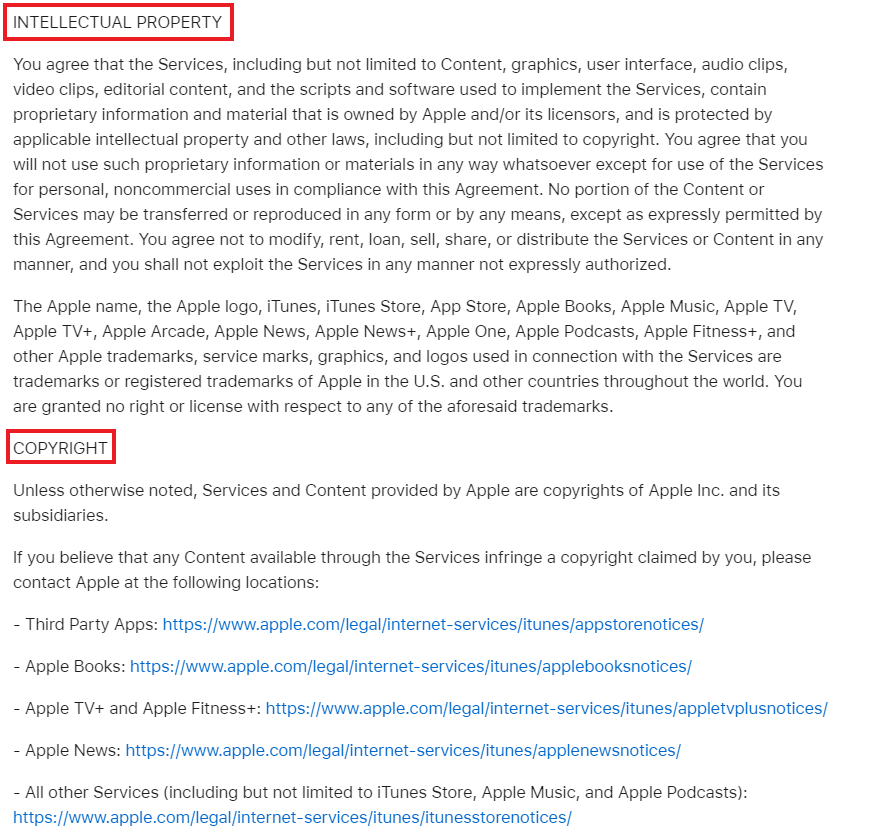
When To Use a EULA
Use a EULA if you’re distributing software that requires users to access or install computer code, such as on their computer or mobile device.
For example, you should use a EULA for distributing the following:
- Word-processing software
- Design and illustration software
- Browsers
- Video games
- Game distribution services like Steam and Origin
When To Use Terms and Conditions
Use terms and conditions agreements if you provide services such as a website, SaaS, or an online store.
Websites and online stores are considered services because users access them online instead of installing them on their computers. In the same vein, SaaS fall under the definition of services because they are cloud-based software solutions that deliver applications to users through the internet.
Services that require terms and conditions include:
- SaaS of all types, including:
- Customer relationship management SaaS like Salesforce
- Cloud storage SaaS like Dropbox
- Cloud platforms with SaaS components like Amazon Web Services (AWS)
- Ecommerce apps and sites
Terms and conditions are specifically made for providing access to services. Unlike EULAs, they establish how the service will operate and revolve around the general agreement between you and the end-user. These contracts also set clear expectations for user behavior, while EULAs typically don’t.
Where Do EULAs Get Displayed?
After you’ve finished writing your EULA, you need to display it in several places on your site.
On Legal Pages
Most companies place links to their EULAs on their legal pages.
For example, Electronic Arts (EA) places all of its EULAs on its legal page under different subheadings:
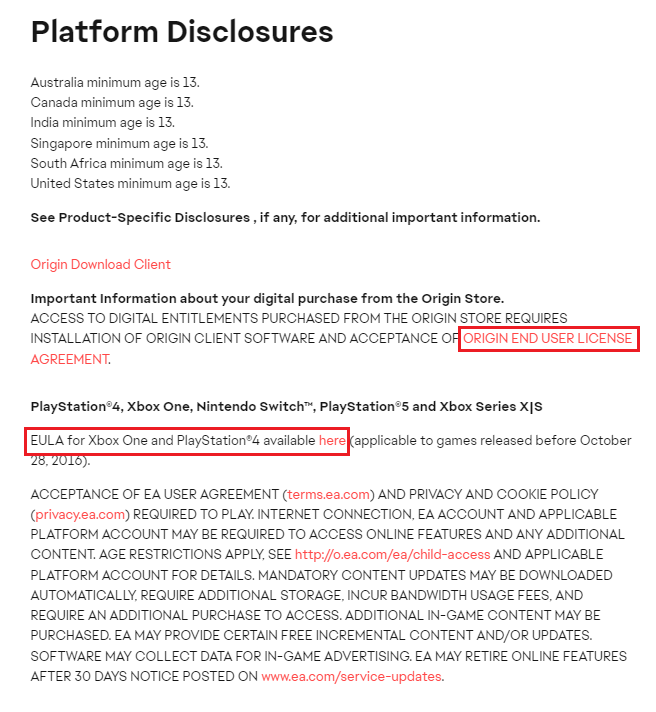
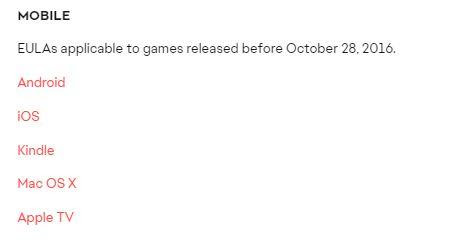
Within the Software
You should also host your EULA within the software itself. Remember to add menus so users can easily navigate to the EULA when using the software.
Here’s an example from Audacity:
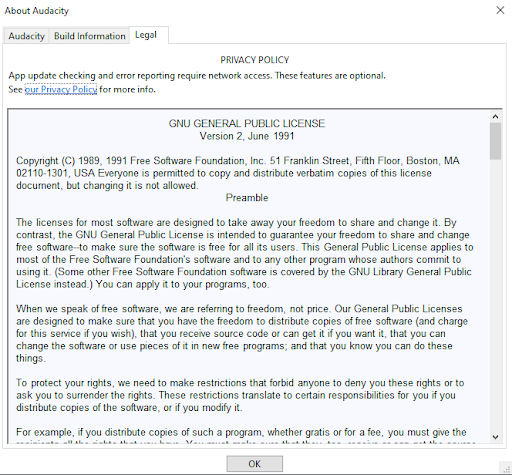
Users can access this EULA by following these steps:
- Click on “Help” and select “About Audacity.”
- Then, click on the “Legal” tab to view Audacity’s EULA.
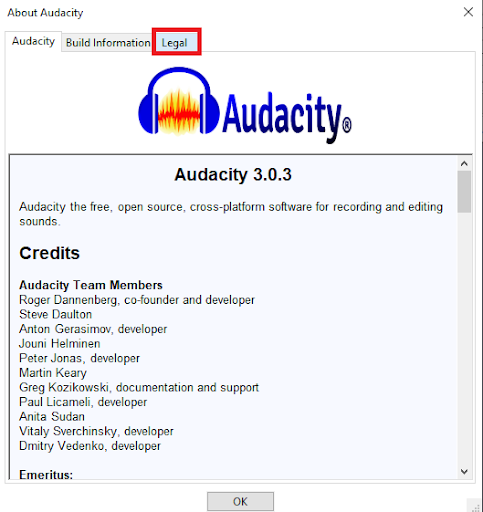
On the App Download Page
If you have an app, you should also include your EULA on your app download page.
Although some companies also add EULAs inside the app itself, most EULAs are only located on the App Store or Google Play store page. That’s because the EULA is most relevant to users at the time of installation. After installing the app, a terms of conditions agreement is more relevant because it establishes how a user should behave and how they should use the app.
Here’s how Apple Pages includes their EULA on their app download page:

After you click on it, you can see the full EULA in a pop-up window:
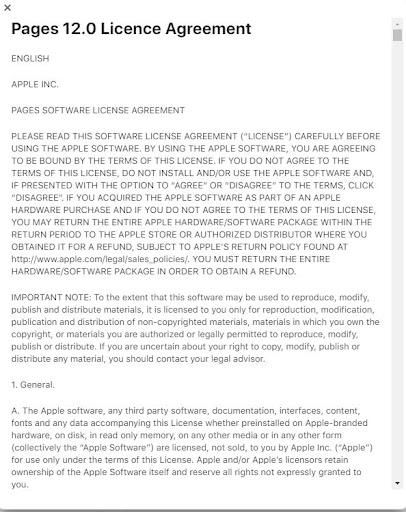
Where Do Terms and Conditions Get Displayed?
As with EULAs, companies typically post terms and conditions on their legal page.
Rockstar Games, for instance, uses a “Legal” link in its footer to link to its Terms and Conditions:
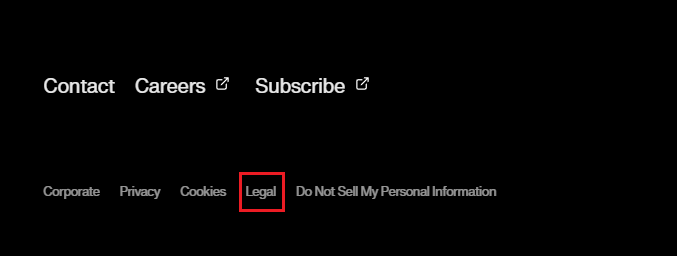
To ensure that users are reading and agreeing your terms and conditions, you should also put a T&C link and an “agree to terms and conditions” checkbox on pop-ups or sign-up forms.
For instance, Patreon tells users that by signing up, they agree to Patreon’s Terms of Use, Privacy Policy, and Cookie Policy:
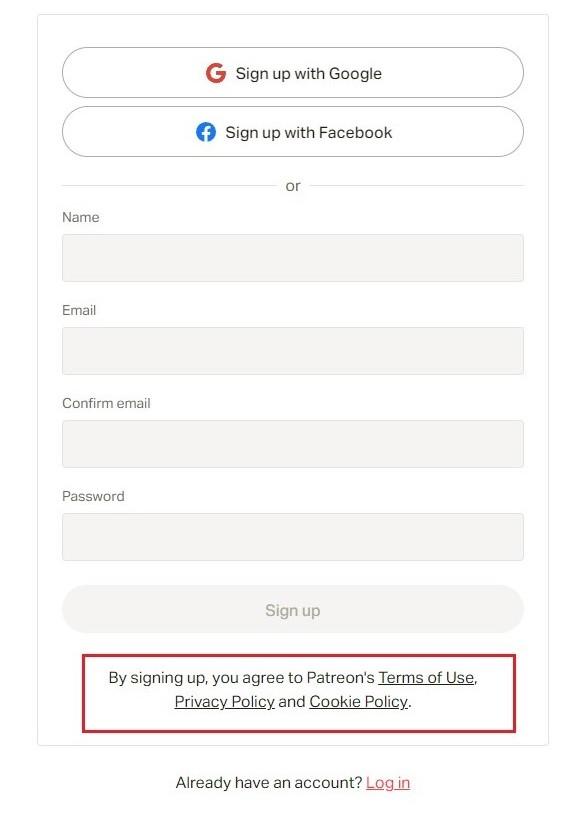
Are There Other Terms You Should Know?
Besides EULAs and terms and conditions, many software and ecommerce companies also use service-level agreements (SLAs).
Unlike EULAs and terms and conditions, SLAs establish the service’s details instead of focusing on the relationship between the company and the end-user.
Specifically, SLAs cover:
- The scope of the service
- Up-time and performance targets
- Quality levels
- What will happen if the user experiences a problem while using the service
Consider using an SLA if you’re providing end-users with a service, such as a website, Software-as-a-Service (SaaS), or an online store.
SLAs will let you set clear performance expectations and are perfect for SaaS since they remind customers that your SaaS is a service, not just software.
Here’s what Google Drive’s SLA looks like:
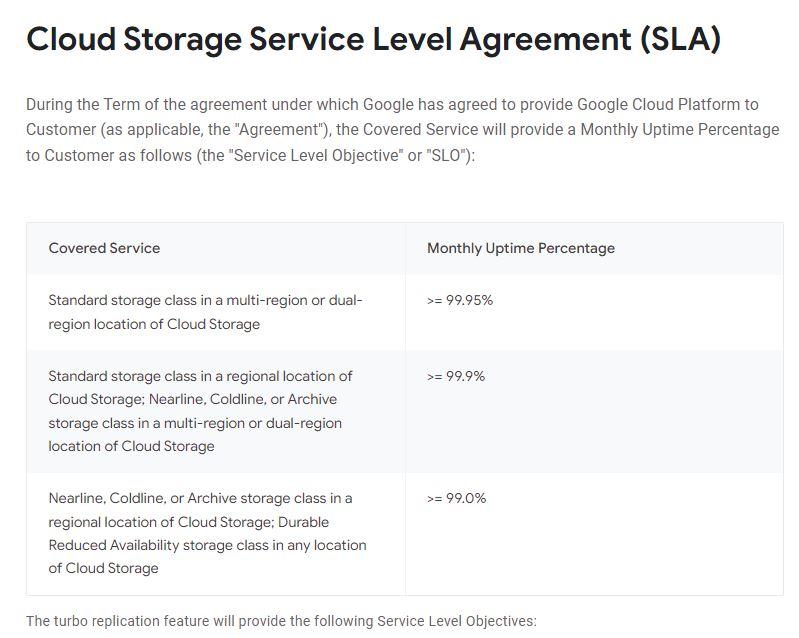
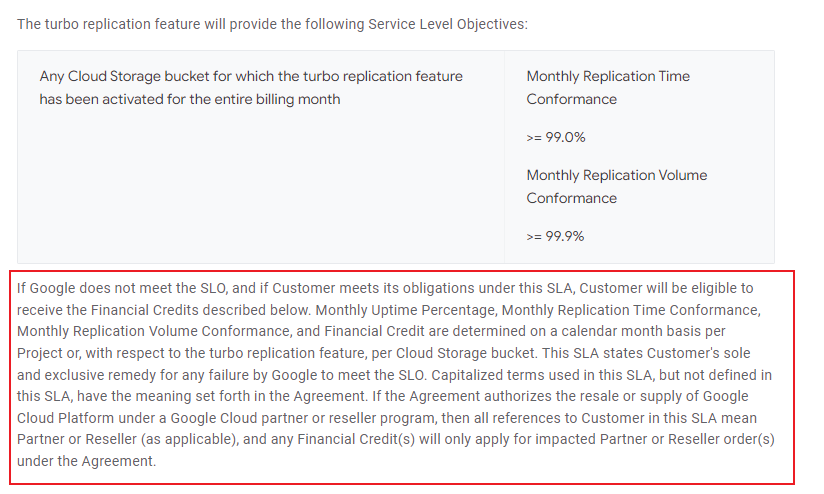
Notice that Google Drive has used a chart to set clear Service Level Objectives (SLOs). The Google Drive team also states that if they can’t meet these SLOs and customers meet their obligations under this SLA, customers will be eligible to receive financial credits.
While terms and conditions agreements can have clauses like this, most of them don’t have as much detail as SLAs. They tend to have more general performance expectations.
That’s why some companies use a terms and conditions agreement and an SLA at the same time.
Summary
A EULA and a terms and conditions agreement are both contracts that establish a relationship between a company and an end-user. The usage of each will depend on what your business offers to users. Lots of businesses actually need to have both!


